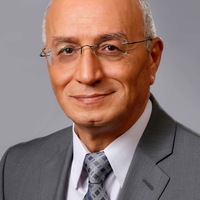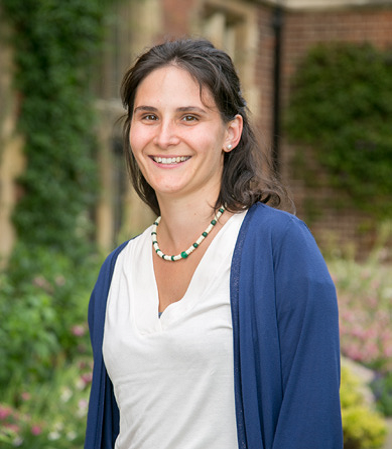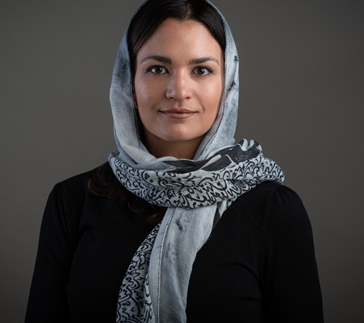In February 2018, the Kingdom of Saudi Arabia, Kuwait, United Arab Emirates (UAE) and Qatar pledged $ 4 billion in the form of loans, grants, and investments to reconstruct Iraq (Chmaytelli & Hagagy, 14 Oct 2018). The same year, Saudi Arabia and UAE provided a grant of $ 930 Million to the UN for its humanitarian operations in Yemen and promised $ 2.6 billion more for the year 2019. A study by the World Bank in 2010 shows that Kuwait, Saudi Arabia, and the UAE have provided generous aid financing over the years (Rouis, 2014). In fact, the combined net of Official Development Assistance (ODA) from Kuwait, Saudi Arabia, and UAE almost doubled on yearly average during the global financial crisis (2008-2010) and doubled again since the Arab unrest in 2011. It reached a record in 2014 at $ 19 billion (Rouis & Shomakhmadova, 2018). The total ODA from those three countries also increased significantly as a share of Gross Domestic Income (GDI) reaching an average of 0.8 percent during 2011-2015. This is higher than the 0.3% of the Development Assistance Committee (DAC) for the same period and of the United Nation’s target of 0.7% that had been set since five decades (Riddell, 2007). Unlike the foreign aid from OECD countries, most of the aid from the Gulf States is provided in the form of grants (90%) and is not conditionality attached. Even when the oil prices dropped from $ 106/barrel to $ 53/barrel in 2014, foreign aid did not shrink from the UAE and Kuwait (Rouis, 2018). Reports on foreign aid from KSA, UAE, Qatar, and Kuwait have started to be published only recently. For example, the UAE was the first country in the GCC to publish its report on foreign aid in 2010 and it became a Development Assistance Committee’s (DAC) participant in 2014 (AlMezaini, 2012). The KSA has started to publish detailed reports on its foreign aid since 2016 (SAMA, 2016). Aid provided by these states is mainly for development and humanitarian purposes. It is delivered to recipient countries bilaterally or through eight regional financial institutions (see their websites below). However, the orientation of aid from the Gulf donors is, to a great extent, dictated by political objectives that go in form of humanitarian and developmental aid. Since the 1970s, Gulf donors have provided a significant amount of aid to Arab countries. In fact, most of the Gulf’s aid goes to Arab countries. This has led to the politicization of aid. However, during the 1980s due to criticism, the distribution of aid from the Gulf States began to include countries from outside the Arab region. Nonetheless, looking at some of the existing statistics, Arab countries remain the main beneficiaries of financial support from the Gulf. This is also due to the influence of Arab nationalism, religion, and political interests in the region. For example, Egypt received $ 30 billion between July 2013 and December 2016, while Yemen has received $ 4.7 billion during 2012-2014 (Rouis & Shomakhmadova, 2018). However, a close scrutiny at the sources, beneficiaries and sectors shows a changing pattern. Most of foreign aid is currently provided bilaterally. This leads each donor’s country to determine their aid objectives. However, because the data on foreign aid provided by GCC countries became available only recently, it has not been used to examine the impact of their aid on recipient countries in terms of poverty reduction, relief, and the contribution to their social and economic development. Similarly, the GCC’s motivations of foreign aid and its effect on the recipient countries’ stability are also under-researched. Against this backdrop, this workshop is intended to contribute to filling the abovementioned gap in the literature. Its main goal is to document the GCC foreign aid and to empirically examines its impact on the recipient countries and to compare it with the findings of literature on foreign aid provided by DAC countries. In addition, it seeks to examine how aid from the Gulf States became a vital tool to exert power and influence since the Arab Uprisings in 2011 as aid has played a significant role in changing the regional dynamics.
3 DAYS / 12 Workshops
MORE THAN 300 ACADEMIC PAPERS
In its simplest definition, foreign aid
consists of one people providing assistance to another people (McNeill, 2019).
It takes one of three forms: ODA, aid provided by non- government organizations
(NGOs), and located aid for humanitarian and emergency purposes (Riddlell,
2007). Development aid or ODA is the part of aid whose purpose is to contribute
to human welfare and development in poor countries; it can be financial grants,
technical assistance or concessional loans. Beginning with the Marshal plan to
reconstruct Europe in early 1950s, the ODA has changed since then in its nature
and goals. In terms of its nature the costs of administering aid, debt
forgiveness to poor countries, and costs incurred within donor countries due to
crisis within poor countries have all become part of foreign aid. The ODA’s
goals have also changed from moving developing countries to the industrial and
technological age (1950s-1960s) to alleviating poverty in 1970s to be followed
in the 1980s and 1990s by conditional aid aimed at forcing developing countries
to adopt structural adjustment policies as a means for economic growth. The
advent of the 21st century was marked by setting the Millennium Declaration
Goals (MDGs), which among other goals aimed to reduce to half the number of
poor people in the world whose income is less than $ 1 a day by 2015 (MDGs, Sep
2000). Recently, the world leaders agreed on 17 Sustainable Development Goals
(SDGs) to be achieved by 2030 (SDGs, 2016).
The literature on foreign aid is extensive but extremely
limited on Gulf aid. However, it can be divided into research surrounding two
questions: why aid is provided? And does aid work?
On the first question, scholars are divided
into two camps: the rationalists and the constructionists (AlMezaini, 2012).
The rationalists believe geopolitical and commercial interests are the driving
force behind foreign aid. For them, aid is a foreign policy tool to sway
countries in the direction of the donors’ interests (Sogge, 2002; Browne, 2007;
Alesina & Doller, 2000; Qiam, 2015). The Constructionists assume that
material interests cannot alone explain foreign aid and that cultural reasons
such as solidarity, identity, humanitarian and egalitarian convictions are also
important reasons for providing aid (Lumsdaine, 1993; Lancaster, 2007;
AMezaini, 2012).
Questions surrounding the impact of foreign aid
on recipient countries, i.e., Does aid work? And is it effective?, revolve
around certain themes and questions such as the role of the recipient countries
in setting the agenda of foreign aid (McNeill, 2019), how the type of recipient
regimes impact the effectiveness of aid (Boone, 1996), whether foreign aid
reaches the poor (Briggs, 2017), how aid is determined and allocated by donor
countries (Zhang and Smith, 2017; Asongu & Nwachukwu, 2016; Bermeo &
Leblang, 2015; Bermeo, 2017), who controls foreign aid when it is received
(Findly et al, 2017), the relationship between good governance and foreign aid
(Martin et al, 2015; Molenaers, et al, 2015; Dupuy et al, 2015; Jones &
Tarp, 2016; Dutta & Claudia 2016), and the role of foreign aid in
countering terrorism and building peace (Heinrich et al, 2017; Nielsen et al,
2011; Findley et al, 2011).
Defining aid and distinguishing between other
methods of economic statecraft and financial intervention, such as oil and gas
in-kind transfers, central bank deposits and commitments of foreign direct
investment, must be part of an understanding of the instruments Gulf States use
in their foreign economic policies.
In comparison to research on aid of ODC
countries, the research on the GCC countries’ foreign aid is fairly new and
mostly descriptive. Consequently, this workshop has five goals:
First, to document foreign aid provided by GCC
countries, mainly the KSA, UAE, Kuwait and Qatar whether this aid is provided
for development or for humanitarian and emergency reasons; and whether it is
provided by the Gulf governments, its regional financial institutions, or its
charity organizations. In other words, the workshop seeks to highlight the
bilateral and multilateral aid from the Gulf States.
Second, to expand our knowledge on GCC countries’ aid
by examining its allocation, effectiveness and motivations. Most existing
literature on Gulf aid, focuses, to a great extent, on the motives of aid, but
it does not explain the changing nature of aid objectives overtime,
particularly in the past twenty years. In particular, this workshop seeks to
explore why Gulf donors have not shifted towards achieving Millennium
Development Goals in line with other international aid donors. The UAE is the
only Gulf donor to have changed its aid strategy to meet these objectives.
Third, to subject the Gulf States’ aid to rigorous
research using sound methodologies and by asking similar questions existed in
the broad literature on foreign aid.
Fourth, to define and distinguish aid policies of the
Gulf States, including an examination of other tools of foreign economic
policymaking and intervention. Bilateral financial support, whether in-kind in
energy supplies, or in central bank deposits can be more direct, more fungible
and more expedient than longer-term development project support. How do Gulf
States determine how and when to intervene with these other tools? And are
there differences in outcomes in recipient states?
Lastly, to expand the pool of researchers interested
in studying aid provided by GCC countries by giving them a platform to present
and discuss their research. There is an extremely limited number of scholars
interested in examining aid provided by the Gulf States.


